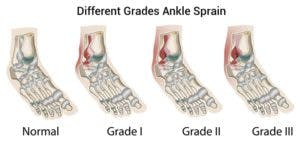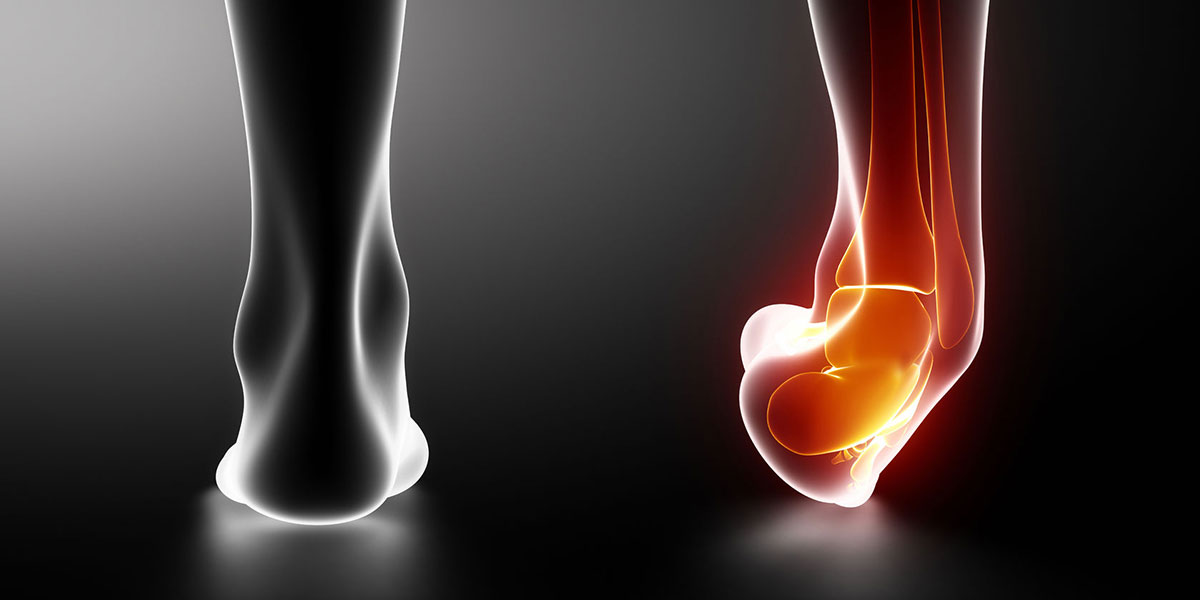What are Ankle Sprains?
Ankle sprains are one of the most common injuries that people experience. These injuries account for one million physician visits each year. Lateral ankle sprains, or inversion sprains, are the most common. They are prevalent in sports. Forty percent of all traumatic ankle sprains occur during sports. However, only 50% seek medical attention. This only increases the risk of developing long-term problems or chronic ankle stability.
There are 3 different grades of ankle sprains, which progressively worsen with each grade. Depending on severity, healing times vary from a couple of days to up to 6 months.

What are Lateral Ankle Sprains?
Lateral ankle sprains occur when the outside of the ankle is stressed. This usually occurs when the ankle is forcefully turned inward. This can happen when stepping on an uneven surface or landing awkwardly after jumping. Lateral sprains typically occur with stress to 1 of the 3 ligaments that stabilize the outside of the ankle.
How Do Physical Therapists Diagnose a Lateral Ankle Sprain?
A physical therapist can use tests and measures to diagnose ankle sprains. Typically this will involve checking the range of motion and strength of the ankle and lower leg. Additionally, special tests and joint mobilization testing can bias the ligaments to determine which are involved.
Movement analysis such as the FMS (functional movement screen), hop tests, and running/agility tests identify impairments that may have contributed to your injury. Your physical therapist will perform other tests and screening procedures to make sure physical therapy is appropriate. If your physical therapist feels you need different services, they will direct you to the best healthcare provider.
How are Ankle Sprains Treated?
Depending on where you are at in the recovery phase and your goals, a physical therapist will approach your care differently. Early in treatment crutches or a boot may be used and a physical therapist will focus more on pain, swelling, and maintaining motion and strength.
As your recovery progresses, your treatment will progress to more active treatments. This will include manual therapy to improve ankle motion, proprioceptive training (like 1-leg band kicks), training for return to activity, and strengthening exercises targeting areas your therapist has found to be weak.
How to Know You Are Ready to Return to Sports?
Physical therapists have a great deal of experience in determining if you are ready to return to sports, work, and other activities. A few of the tests your physical therapist uses to determine if you are ready to go back to your sport are the FMS, Y-Balance test, hop testing, tuck jump assessment, and the Landing Error Scoring System. A physical therapist can also give you recommendations on footwear and proper training tips to help avoid injuries in the future.
Contact your physical therapist to learn more about managing ankle sprains so you can back to living and playing your best.

